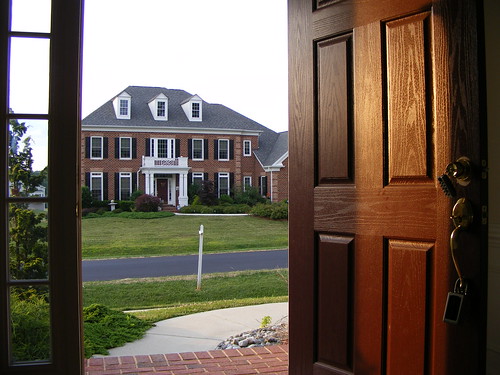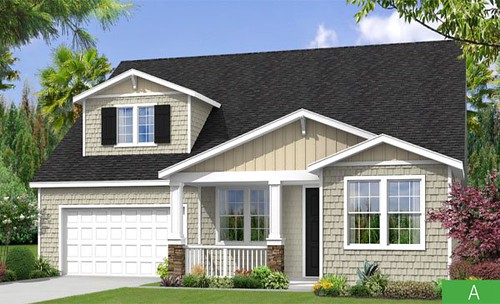
Skeptics of Montgomery County's proposal to allow homeowners to build accessory apartments more easily claim it will change or harm single-family neighborhoods. But recent trends in housing suggest that those neighborhoods will change anyway.
Slightly less than half of Montgomery County households live in single-family homes today, and pretty soon they may no longer be the most common type of house in the county. According to the 2010 American Community Survey, a sort of yearly census, just 49.9% of the county's 353,000 households live in single-family homes. Another 31% live in apartments or condominiums, while the remaining 19% live in townhomes or duplexes.
Demand for big suburban houses or "McMansions" has waned in recent years, due to their high cost and shrinking households. Young adults aren't interested in them, either. Even those who prefer single-family homes would take a smaller house or a townhouse to be closer to jobs and amenities.
As a result, newly built homes are more likely to be apartments or townhomes. Data from the MoCo Planning Department shows that of 29,000 homes approved for construction here in the coming years, just 7,900 or 27% of them will be single-family homes. Those houses are likely to be smaller as well.
Nonetheless, there are still plenty of McMansions in Montgomery County: the 2010 ACS says that one-fourth of MoCo homes have nine or more rooms. What will happen to them? These houses will have to adapt to living arrangements they were't built for, and the single-family neighborhood as we know it may have to change as well.

Some of these big houses might attract single adults, who find they can afford a nicer home if they share it with other people. Group houses aren't new to Montgomery County; in fact, they're legal if there's fewer than 5 unrelated adults in the same house. But they do present an opportunity to create small "intentional communities," where residents seek not only a common roof but a common purpose as well.
Take Rainbow Mansion, a 5,000-square-foot home in Silicon Valley home to a group of twentysomething tech workers. The home's founders describe themselves as "intentional community of driven, international, passionate, and socially conscious people trying to change the world":
It was more than just a luxury home full of brilliant young minds . . . The Rainbow Mansion was an experiment in a new type of cohabitation. The house began hosting hackathons and salons in its library, inviting Silicon Valley’s best and brightest to participate. “Right away it set itself in motion,” [co-founder Jessy Kate] Schingler says. “It had this sort of accidental mystique about it.”A house that was probably built for a nuclear family has instead become the nucleus of a larger community. Of course, Montgomery County isn't Silicon Valley. But it's easy for me to imagine something like Rainbow Mansion appearing in a house near the Great Seneca Science Corridor one day. After all, there are over 500,000 jobs in MoCo, and young adults who seek the city life but work in Gaithersburg will probably live nearby rather than commute from the District.

Other large homes may still draw families, but they'll be extended, multi-generational families, with grandparents, adult children, and other relatives and friends. They're living together to share expenses but may want some level of privacy and autonomy.
Today, MoCo's extended families can apply to build a "Registered Living Unit" in their home, basically an accessory apartment for a relative or home employee who lives there rent-free. There are only about 500 of these in the county today, but as multi-generational families become more common, we may see more of them.
Even home builders are picking up on the trend, adding apartments for extended family in new homes. Noting that nearly a third of American families have "doubled up" with relatives or friends, national builder Lennar Homes recently introduced a design called the "NextGen" home.

Called a "home within a home," the NextGen home looks like a typical single-family house on the outside, but inside is a separate apartment with its own private entrance, kitchen, and bathroom. Lennar hopes it'll be popular with immigrant families in which multiple generations live together.
While these homes are only being built in a handful of states like South Carolina and California, they have yet to make an appearance in the D.C. area. But Montgomery County's growing immigrant population suggests there may be a market for homes like this here.
For much of the 20th century, Montgomery County was known for big houses, great schools and affluent families. It's not surprising that civic groups call single-family neighborhoods the "backbone" of the county. While those neighborhoods may not be going away anytime soon, changing trends and changing demographics suggest they may look quite different in the future.

No comments:
Post a Comment